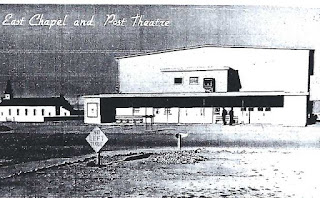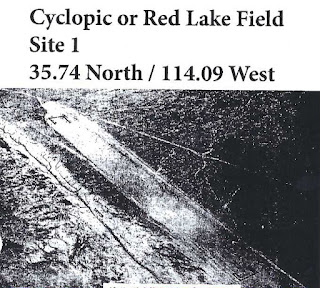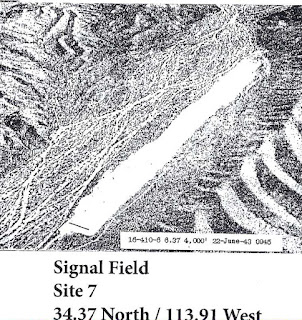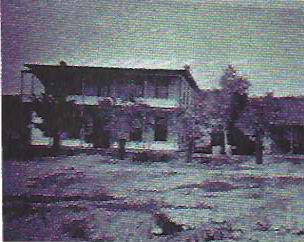Mohave County Place Names by Roman Malach, Kingman AZ, 1976. Available at Mohave County Library, Kingman. Sometimes this book gives the origin of place names, and sometimes it does not. However it does list 60 different places. This is just a drop in the bucket when you calculate there were 13,000 mines in the county. I will try to share a few.
Arizona Strip refers to the area of the county that is north of the Colorado River. It is not easily accessible from the Kingman area as one has to travel through Las Vegas and then through Utah and back south to reach the majority of the area. However it represents a third of Mohave County. Cane Beds is a Mormon Community in the strip. It is named for wild cane which grew in the area. Once had a school but mostly abandoned now. Kaibab Reservation was established in 1917. Moccasin is a Mormon community established in 1864 as a spring was discovered and farming attempted. A paved road goes form Pipe Springs to Moccasin where a school is located. Pipe Spring was originally a Mormon community where the attempted farming and ranching using the spring. More recently purchased by the government and now a National Monument. Mount Trumball has a good spring. There was a sawmill from were wood was harvested for the St. George Temple. There was also a school but no residents remain. Tuweep Valley is close by. Once occupied by ranchers but only their empty houses remain. Wolfe Hole is another ranching community in the area.
Aubrey City is at the confluence of Colorado and Williams River and is now under water of Lake Havasu. It was a place for transporting supplies to mines up the Williams River. It is named for Francoise Aaview Aubrey. Planet City is about twelve miles from Aubrey and was a rest area town for those traveling to McCracken Mine. McKracken Mine is in the south of Mohave County east of Lake Havasu. It is named for the finder of the mine. The ore was milled in Signal. Also in the area was a Mexican community called Tortilla Flat. Rawhide was also in this area where some mines can still be seen on the hills.
Beale's Spring is named for Lieutenant Edward F. Beale whose company stopped here for water in his 1857 to found a wagon trail across Arizona. It has been used as a stage coach station, a military post, for one year as a reservation for the Hualapai. It has had a hotel, restaurant and swimming facilities. Most of the water is diverted to Kingman City.
Big Sandy River runs from the Hackberry area south to the Williams River. It was named by Lt. A. Whipple as it runs through a sandy wash.
Black Mountains is a range stretching from northern Mohave County to the Union Pass. It was named by Lt. Joseph Ives. El Dorado is a mining area in the Black Mountains area west of Last Crossing. El Dorado a goes down to Mohave Lake on the Colorado River. The canyon extends on the other side of the river where mining also occurred in Nevada.
Bonelli Crossing is named for Mormon pioneer Daniel Bonelli. He ran a ferry across the Colorado River. Also known as Rio Ville. He constructed a large home and this was a place for rest for travelers.
Bullhead City is a newer community and is named for Bullhead Rock which is mostly covered by Lake Mohave. It was a service station for those working at Davis Dam. Davis Dam was originally called Bullhead Dam but the name was changed to Davis for Arthur Powell Davis a former Director of Reclamation. Hardyville is a couple miles down river from Davis Dam. It was a Colorado River landing established by William Harrison Hardy. It was the second county seat and Hardy was county supervisor at one point. Silver Creek Wash flows from Goldroad to the Colorado River here. Fort Silver was along the wash. Katharine was the name of a mine discovered by J.S. Bragg and named for his sister. East of Bullhead is the Silver Creek area with Moss Mine discovered by John Moss. Secret Pass was known to Native Americans where there are caves to sleep in and a spring for water. South of Union Pass which is the pass on Route 69 between Golden Valley and Bullhead.
The Cerbat Mountain Range hosted many mines and communities. Cerbat was located in Cerbat Canyon. It was the third county seat 1871-1873. There are many mines in Cerbat Canyon. By the early 1900s the mines had played out. Cherum Peak is the highest peak in the Cerbat range. It was named for a Hualapai chief. It is behind the community of Chloride. Chloride is a community with many mines in the area. It is about fifteen miles south of Cerbat. Golcanda, a mine in the Chloride area is credited with producing $6,500,000 in minerals in two years. It burned down and was never rebuilt as supplies were in short supply during WWI. Mineral Park is the fourth county seat. At one time it was the largest community in the county. It is between Cerbat and Chloride. It is known for an open pit copper mine which is still mined on occasion. It also has a large turquoise mining operation. Stockton Hill is located north of Kingman in the Cerbats and once had many mines.
Dolan Springs is a newer community. At one time the area was owned by Daniel Bonelli and there was a corral there. Dolan may be a man held for drunkenness at Beale Springs. There is a spring there used by the community. Dolan Springs is on the Pierce Ferry Road 30 miles north of Kingman. Lost Basin is between Dolan Springs and Pierce Ferry and was the location of many mines. Farther than Lost Basin but still between Dolan Springs and Pierce Ferry is Meadview. This is a new subdivision type community.
Glenwood is a community along the Colorado River across from Needles. Rail workers settled there and raised gardens, mostly melons.
Gold Basin is in the White Hills area. There were several mines in the area. The nearest rail station was Hackberry, about 40 miles distant.
Goldflat is a mining district southwest of Kingman in the McConnico area. The bimetal mine is known as McGuire Mine for the owner. McConnico was a train station five miles from Kingman. It is where the Chloride line met the main line.
Hackberry was named for the Hackberry trees in the area. It started as a mining town snd is along Route 66. Music Mountains are located close to Hackberry where several mines were located.
Hoover Dam is named for President Hoover. Lake Mead is named for Elwood Meed the Bureau of Reclamation director at the time.
Hualapai Mountain is named for the Native American Tribe. It is the highest range in Mohave County. The highest peak is 8268 feet. There are many mines in the area. Lafayette Maynard gave his name to the Maynard Mining District which included the American Flag Mine, on the west side of the Hualapai Mountains near the summit. Boriana Mine was a tungsten mine and resulted in a rather large community. 45 persons attended school. It is in the Hualapai range. Abandoned before 1963. Cedar Mining District is southeast of the Hualapai. Also here was the Lost Cabin Mine, which was later found and mined. Copperville was another mine in the area. Free's Wash, named for John Free was an important watering place in the Hualapai range. Hualapai County Park is a camping park.
Hualapai Reservation is along the Colorado River. Peach Springs is the major city of the reservation. The West Rim of the Grand Canyon is on the reservation. Peach Springs is named for a spring that had peach trees nearby. It was originally a stage coach stop and is now reservation head quarters.
Kingman is named for Lewis Kingman who established the railroad stop. There were no intentions for a city but Conrad Sheffield applied for the town ship and then subdivided the down down area. Kingman became the county seat in 1887.
Lake Havasu City is the newest and now the largest community in Mohave County. During WWII the peninsula (now island) was used as a substation for the Kingman Army Air Field. Robert McCulloch purchased the area and established the city. London Bridge is now there. This area was previously known as Liverpool Landing, Pittsburg Landing and Godman.
Littlefield is a small Mormon community just north of Mesquite. It is separated from the Arizona Strip by the Virgin mountains. Also the community of Beaver Dam is in this area.
Fort Mohave was first established as Fort Colorado in 1859. It was abandoned during the Civil War but reestablished in 1863 and ran until 1890 when turned into an Indian boarding school. This was abandoned in 1934 and the buildings subsequently dismantled. Fort Mohave is south of Bullhead. Mojave City, adjacent to the fort was a civilian community and the first county seat of Mohave County.
Oatman area had many mines. Oatman was established in the early 1910s and had as many as 50 mines in the area, and a high population of 10,000. It is named for Goldroad produced millions of dollars but is long gone. Boundary Cone was named by Lt. Ives as the 35th parallel goes through the area. Mazona was an area adjacent to Oatman. The business section was destroyed by fire and never rebuilt. Milltown below Oatman had a mine and a large mill connected by rail. It also had homes for miners. However it was short lived. Old Roads is also just below Oatman and had its own business district including a swimming pool. Sitgreaves Pass along Route 66 was named for Lt. Lorenzo Sitgreaves by Lt. Joseph Ives.
Sharp's Bar was named for a prospector in the area, C.M. Sharp. It is now known as Willow Beech on the Mohave Lake, Lake Mead National Recreation Area.
Sweeney is opposite Needles. Bill Sweeney once operated a ferry here.
Temple Bar is on the south shore of Lake Meed. It is several bars and cliffs, one which looked like a Mormon Temple to Daniel Bonelli.
Truxton Canyon was once a stage coach stop and is close to Route 66 and Valentine. Valentine has a section which pertains to the Hualapai Reservation and was once home to an Indian boarding school. Named for Robert G. Valentine former commissioner of Indian Affairs.
White Hills are a group of hills east of Last Stop on Route 93 where there were several silver mines. It was devastated by a flood and abandoned.
Willow Grove Camp endured a short time 1864-1869 as a place to watch the Hualapai during hostilities and protect the Mohave-Prescott Road.
Yucca is a community on the I-40 about ten miles west of Kingman. Ford proving ground facility is located her.






























































